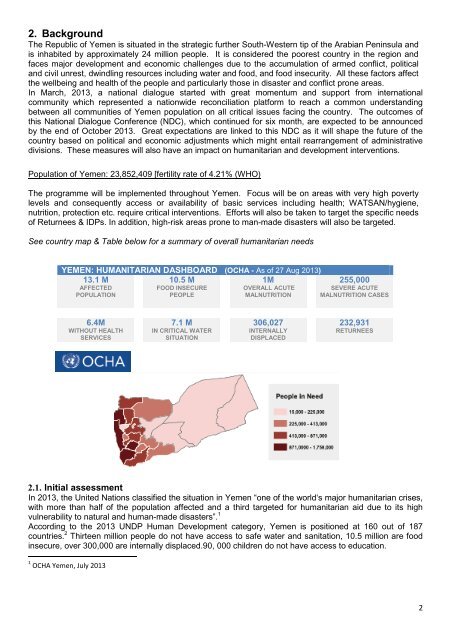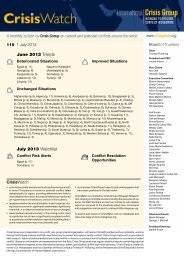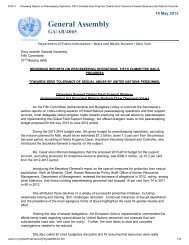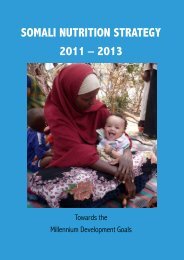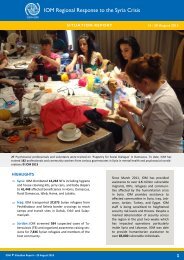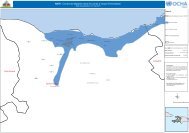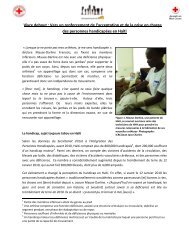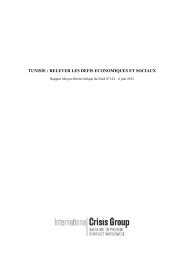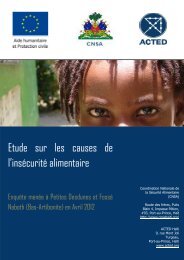Download PDF (682.22 KB) - ReliefWeb
Download PDF (682.22 KB) - ReliefWeb
Download PDF (682.22 KB) - ReliefWeb
Create successful ePaper yourself
Turn your PDF publications into a flip-book with our unique Google optimized e-Paper software.
2. Background<br />
The Republic of Yemen is situated in the strategic further South-Western tip of the Arabian Peninsula and<br />
is inhabited by approximately 24 million people. It is considered the poorest country in the region and<br />
faces major development and economic challenges due to the accumulation of armed conflict, political<br />
and civil unrest, dwindling resources including water and food, and food insecurity. All these factors affect<br />
the wellbeing and health of the people and particularly those in disaster and conflict prone areas.<br />
In March, 2013, a national dialogue started with great momentum and support from international<br />
community which represented a nationwide reconciliation platform to reach a common understanding<br />
between all communities of Yemen population on all critical issues facing the country. The outcomes of<br />
this National Dialogue Conference (NDC), which continued for six month, are expected to be announced<br />
by the end of October 2013. Great expectations are linked to this NDC as it will shape the future of the<br />
country based on political and economic adjustments which might entail rearrangement of administrative<br />
divisions. These measures will also have an impact on humanitarian and development interventions.<br />
Population of Yemen: 23,852,409 [fertility rate of 4.21% (WHO)<br />
The programme will be implemented throughout Yemen. Focus will be on areas with very high poverty<br />
levels and consequently access or availability of basic services including health; WATSAN/hygiene,<br />
nutrition, protection etc. require critical interventions. Efforts will also be taken to target the specific needs<br />
of Returnees & IDPs. In addition, high-risk areas prone to man-made disasters will also be targeted.<br />
See country map & Table below for a summary of overall humanitarian needs<br />
YEMEN: HUMANITARIAN DASHBOARD (OCHA - As of 27 Aug 2013)<br />
13.1 M<br />
AFFECTED<br />
POPULATION<br />
10.5 M<br />
FOOD INSECURE<br />
PEOPLE<br />
1M<br />
OVERALL ACUTE<br />
MALNUTRITION<br />
255,000<br />
SEVERE ACUTE<br />
MALNUTRITION CASES<br />
6.4M<br />
WITHOUT HEALTH<br />
SERVICES<br />
7.1 M<br />
IN CRITICAL WATER<br />
SITUATION<br />
306,027<br />
INTERNALLY<br />
DISPLACED<br />
232,931<br />
RETURNEES<br />
2.1. Initial assessment<br />
In 2013, the United Nations classified the situation in Yemen “one of the world‘s major humanitarian crises,<br />
with more than half of the population affected and a third targeted for humanitarian aid due to its high<br />
vulnerability to natural and human-made disasters”. 1<br />
According to the 2013 UNDP Human Development category, Yemen is positioned at 160 out of 187<br />
countries. 2 Thirteen million people do not have access to safe water and sanitation, 10.5 million are food<br />
insecure, over 300,000 are internally displaced.90, 000 children do not have access to education.<br />
1 OCHA Yemen, July 2013<br />
2


